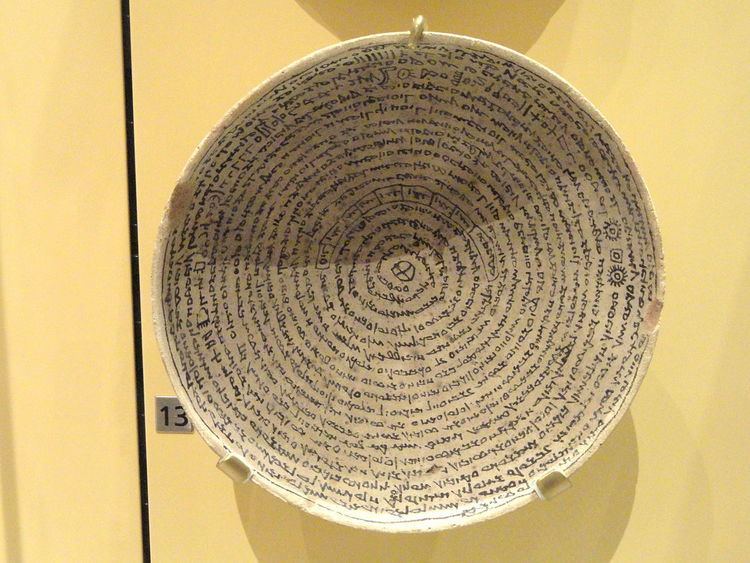 | ||
An incantation bowl, also known as a demon bowl, devil-trap bowl, or magic bowl, is a form of early protective magic found in modern-day Iraq and Iran. Produced in the Middle East during the Late Antiquity from 6th to 8th century AD, particularly in Upper Mesopotamia and Syria, the bowls were usually inscribed in a spiral, beginning from the rim and moving toward the center. Most are inscribed in the Aramaic languages. The bowls were buried face down and were meant to capture demons. They were commonly placed under the threshold, courtyards, in the corner of the homes of the recently deceased and in cemeteries.
Contents
Archaeological finds
To date only around 2000 incantation bowls have been registered as archaeological finds, but since they are widely dug up in the Middle East, there may be tens of thousands in the hands of private collectors and traders. Aramaic incantation bowls from Sasanian Mesopotamia are an important source for studying the everyday beliefs of Jews, Christians, Mandaeans, Manichaeans, Zoroastrians and pagans on the eve of the early Muslim conquests.
In Judaism
A subcategory of incantation bowls are those used in Jewish and Christian magical practice. (See Jewish magical papyri for context). Aramaic incantation bowls are an important source of knowledge about Jewish magical practices, particularly the nearly eighty surviving Jewish incantation bowls from Babylon during the rule by the Sasanian Empire (226-636), primarily from the Jewish diaspora settlement in Nippur. These bowls were used in magic to protect against evil influences such as the evil eye, Lilith, and Bagdana. These bowls could be used by any member of the Jewish community, and almost every house excavated in the Jewish settlement in Nippur had such bowls buried in them.
In Christianity
At the same period in Syria Christian incantation bowls are also found, often in Syriac rather than the Aramaic alphabet used for Aramaic and Hebrew.
